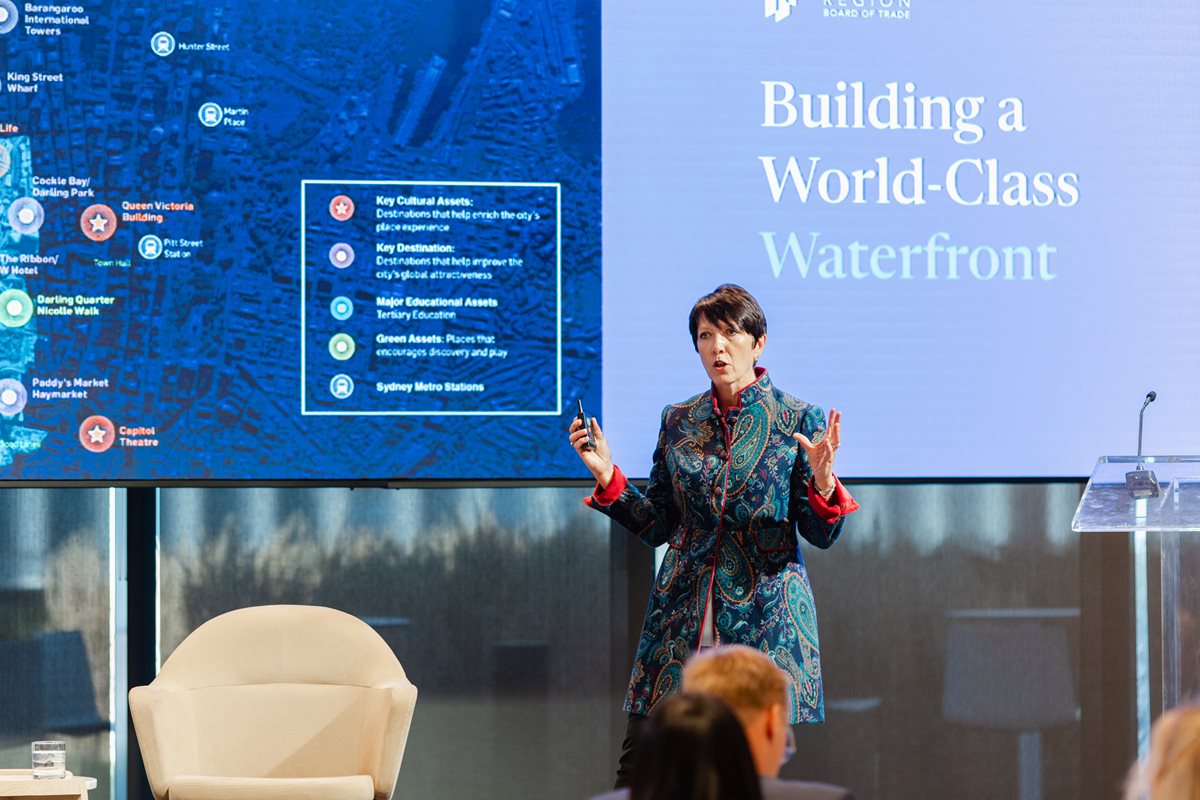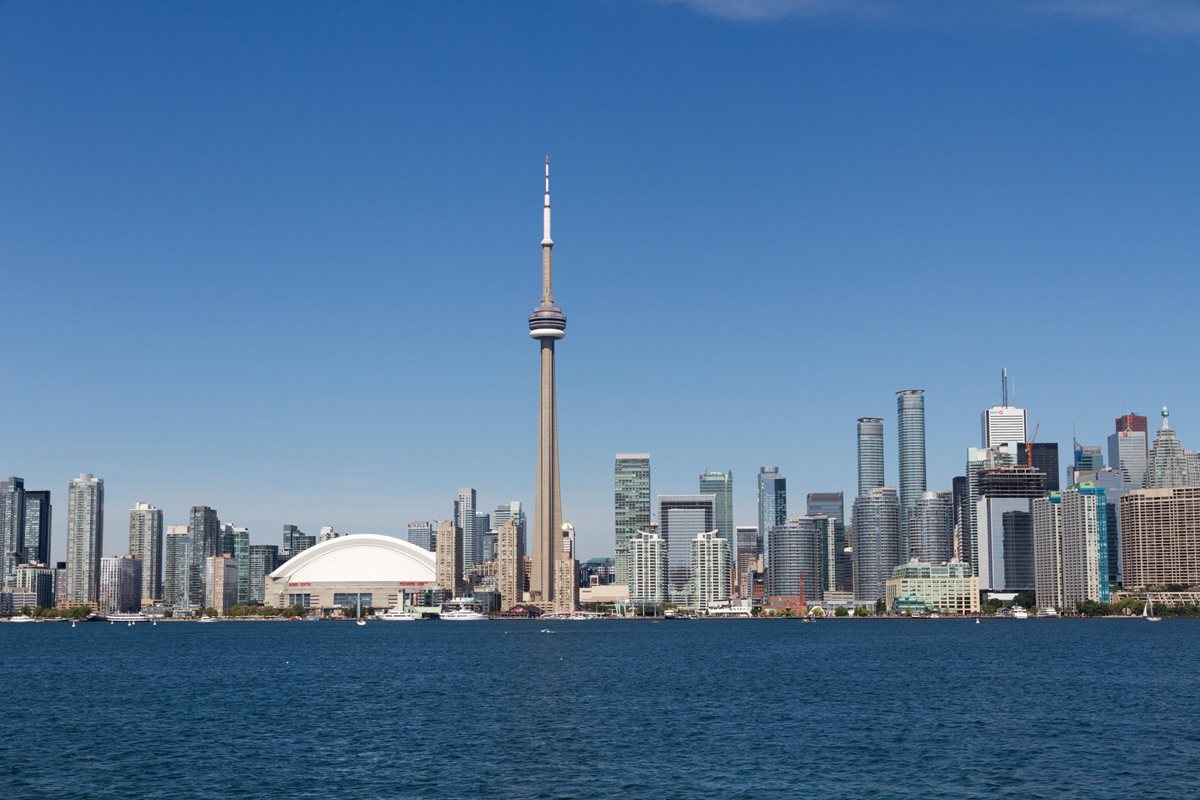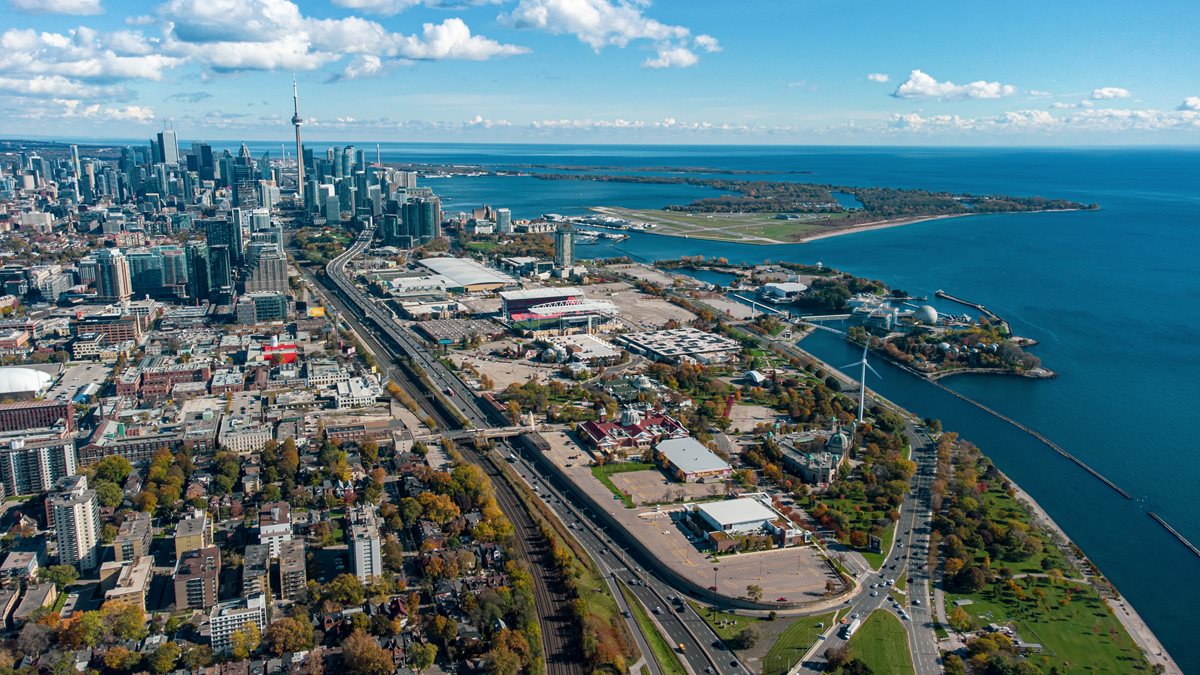We recently launched our report, Ripple Effect: Unlocking Toronto's Waterfront Potential, which calls for a cohesive "Team Waterfront" approach to address the challenges and opportunities facing our waterfront. To gain further insights, we spoke with Kate Meyrick, Director of Urbis and a keynote speaker at last fall’s Building a World-Class Waterfront event.

Known for her expertise in visioning and positioning city-scale precincts, Kate Meyrick has worked across Australia, Asia, Europe, the Middle East, and the USA. During our fall event, Kate issued strong challenges regarding the development of Toronto's waterfront, suggesting the city has been resting on its laurels and emphasizing the need for a cohesive, exciting plan.
Here are Kate’s thoughts on our report and how she believes it can support a unified vision for Toronto's waterfront:
Kate, thanks for making time for our event and for reviewing our new report. What are your thoughts on Ripple Effect’s recommendations?
Kate Meyrick: Ripple Effect is a real call to arms! As a city, we often forget that we are a collective entity, and we actually succeed and go further when we work together. So, the idea that we understand how significant the waterfront is as one of our most profound and enduring urban assets, and that we come together to make sure we have a cohesive plan for its future is absolutely critical. Intrinsically, I feel Toronto has spun its wheels for the past ten years. Now is the time to come together. This report gives Toronto a chance to work out what the waterfront should do for the city and how all the players involved should work together to achieve that.

Photo Credit: Destination Toronto
What do you think has been the biggest roadblock over the past 10 years?
KM: I think there have been a couple of roadblocks. The waterfront is very big and has many different components. So, there are many places. What is the vision for the waterfront? That question can’t really be answered right now. Toronto needs a really clear understanding of the waterfront’s value, and how it should be developed. Having a coordinated perspective of the whole waterfront will make a big difference.
The second is, it's easy to be distracted. Toronto is a great city. It's had meteoric, sustained population and economic growth. You know, when I think about all the issues you’ve been faced with over the years I kind of feel like the waterfront has been an afterthought. We’ve forgotten about the importance of having a policy focus for the waterfront and having an intentional business focus on it as an asset.
One of the main recommendations from our report is for the Board to form a waterfront coalition. How can we ensure this coalition is effective and not just another layer of bureaucracy?
KM: I think it's about focus, not bureaucracy. So, it's about having a singularity of focus. When I look at the Sydney waterfront, it's been so successful as a social and an economic engine because it has a singular authority that makes decisions on its behalf to the benefit of the public. So, I think this is about focus. If we create another entity without the singularity of focus, without a really clear mandate, it will just be another decision-making roadblock. If it has clear focus, it will be a really, really powerful agent for change.
Do you believe that our coalition can successfully unite all these competing interests? How can we ensure that everyone collaborates effectively and "plays nice together in the same sandbox"?
KM: It’s extra important that you do play well together because in Toronto, no one person or entity owns the entirety of the waterfront estate. However, you can still govern it a little bit like they do in Sweden. In Stockholm, they don't own the entirety of the waterfront, but they have a whole waterfront master plan that sets up rules and principles for the development and activation of that waterfront. To some extent, that's a little bit similar to Sydney where there are pockets of private ownership. Even with that private ownership, Sydney has a really clear sense of how the waterfront is to be used and what is and is not an appropriate course of action, whether that's around development or adaptive reuse or operational management or restoration of it. So, you can still have a really clear strategy.

Photo Credit: Destination Toronto
Alright, so let's say we manage to get everyone on board. What should our goals be? Should we try to do what Sydney has done with their waterfront?
KM: Sydney respects the diversity of its waterfront locations, allowing each area to have its own identity, sense of purpose, and unique contribution. The city has focused heavily on public access, public spaces, and public utilization. Crucially, Sydney hasn’t allowed large swathes of its waterfront to be privatized. You can walk or cycle the entire waterfront, encouraging a journey of discovery from one micro destination to the next. Some areas are urban, some are natural, and some have never been used for anything. The ability to explore the whole waterfront without spending money is really important.
The second major point is that Sydney's waterfront tells the story of the city. It includes the city's first nation history and a balanced narrative of European culture. This creates a place of high emotions and strong senses of attachment and belonging for many people. We've embraced that history and made sure all of those stories are told in layers.
Lastly, Sydney has balanced resiliency with the importance of the water being able to be where it should be, considering factors like rising sea levels. We've also thought about our environmental story and the ecology of water country, which is a term used by our first nations. Simultaneously, we've recognized the importance of culture, creativity, social vitality, recreation, and leisure.
In addition to offering lots of free attractions, our report mentions Toronto’s waterfront is going to need some more big-time attractions. What do you think these should be?
KM: Okay, I think two things. Toronto needs to be more playful and more creative. So, I would love to see an investment in things that make the city feel joyful and playful. It's easy for that to sound like it's childlike. It's not. Play is an incredibly important thing throughout life. It's the way that it releases endorphins for us, the way that it inspires curiosity works for our physical and our mental health. But it also works for our economic development. So, I'd love to see something that was more playful.
I would definitely love to see something that was creative and culturally immersive, something that maybe starts to use augmented reality, virtual reality mixed media, something that Torontonians and visitors from around the world can connect through, so that I can be sitting here in an Australian city contributing to an experience that people in Toronto are enjoying, and vice versa.
So I want to see a whole lot more imagination. I don't think that this is necessarily about having something the same as any other city has. It's got to be a calling card or hallmark that only Toronto has access to.
Lastly Kate, at our fall event you mentioned Toronto needs to elevate its thinking in urban planning. How can we use the waterfront to drive that growth?
KM: The waterfront can become part of how the city attracts and supports the growth of new clusters. I think the old-fashioned days of cities managing different departments in silos, those days are gone. The city is an asset. We have to actively curate it. All systems are interconnected. If we change one system, it has a series of consequences on the others. So, let's work out how we use the waterfront as a flywheel for all of these other things, and the city itself will flourish. And, I suppose that's what I'm looking for. I want to see the next generation of Toronto showing what really enlightened urban governance can achieve!
Thank you to our Ripple Effect report partners, the Waterfront BIA and the Business of Cities.